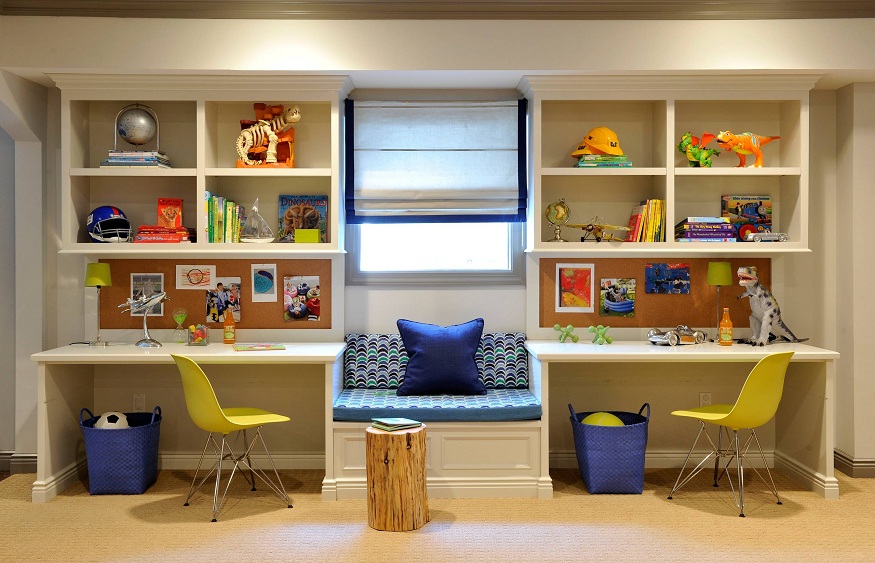A well-organized study room can significantly enhance a child’s productivity and learning experience. With the right storage solutions, kids can easily access their books, stationery, and other study materials, promoting a conducive environment for focused learning. In this article, we will explore some smart storage ideas for kids’ study rooms, with a focus on book rack and study tables with shelves.
1. Book Racks:
Book racks are essential for keeping books easily accessible while maintaining a neat and organized space. Here are a few smart ideas for book storage:
- Wall-mounted book racks: Utilize vertical space by installing wall-mounted book racks. These racks can be customized to match the room’s decor and provide ample space for storing books of various sizes. Categorize books by subjects or genres to make them easier to find.
- Floating shelves: Floating shelves are a stylish and space-saving solution for storing books. Install them at different heights to create an interesting visual display while ensuring easy access to books. This approach is particularly useful if the study room has limited floor space.
- Bookcase with integrated desk: Opt for a bookcase that comes with an integrated desk. This multifunctional piece of furniture provides storage for books on one side and a study area on the other. It maximizes space utilization and promotes an efficient learning environment.
- Study Table with Shelf:

A Study Table With Shelf with built-in shelves is a great way to keep essential study materials within reach. Here are some ideas to incorporate shelves into study tables:
- Cubby-style study table: Choose a study table that features cubby-style shelves on the sides or underneath the tabletop. These cubbies can hold books, notebooks, and other study supplies, keeping the workspace clutter-free.
- Adjustable shelves: Opt for a study table with adjustable shelves to accommodate varying sizes of books and materials. This flexibility allows customization based on the child’s needs and ensures efficient utilization of space.
- Overhead shelf: Consider a study table with an overhead shelf. This additional storage space is perfect for keeping reference books, dictionaries, and other frequently used resources. It helps clear the desktop and creates a more organized working area.
- Additional Storage Solutions:
In addition to book racks and study tables with shelves, here are a few more storage ideas to maximize organizational bliss in kids’ study rooms:
- Stationery organizers: Use desk organizers or drawer dividers to keep stationery items like pens, pencils, erasers, and rulers in order. Assign specific compartments for different items to promote easy access and prevent clutter.
- Wall-mounted organizers: Install wall-mounted organizers or hanging pockets to hold smaller items like calculators, sticky notes, and flashcards. These organizers can be hung near the study table for quick and convenient access.
- Labeling and categorization: Labeling shelves, drawers, and bins can help kids identify where each item belongs. Use color-coded labels or pictures for younger children to make it easier for them to maintain an organized space.
- Rolling storage carts: Consider adding a rolling storage cart to the study room. These carts provide flexible storage options and can be moved around easily, making them ideal for holding art supplies, project materials, or additional books.
- Digital storage solutions: Embrace digital storage options for e-books and digital resources. Install a tablet or e-reader stand on the study table to keep digital materials accessible and avoid clutter caused by physical books.
In conclusion, creating an organized study room for kids is crucial for fostering productivity and learning. Incorporating smart storage ideas like book racks and study tables with shelves can make a significant difference. By utilizing vertical space, customizing storage solutions, and implementing additional organizational strategies, parents can create an environment that promotes a love for learning and enables children to excel academically.
